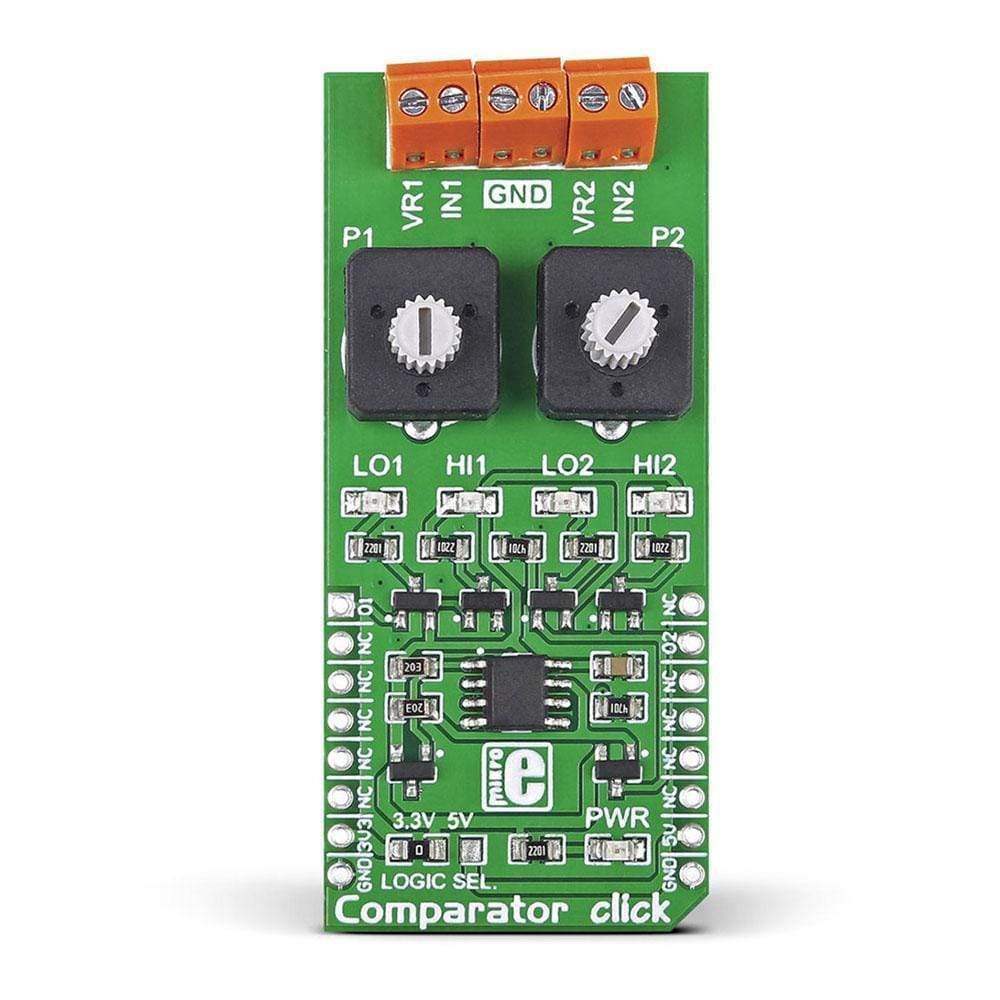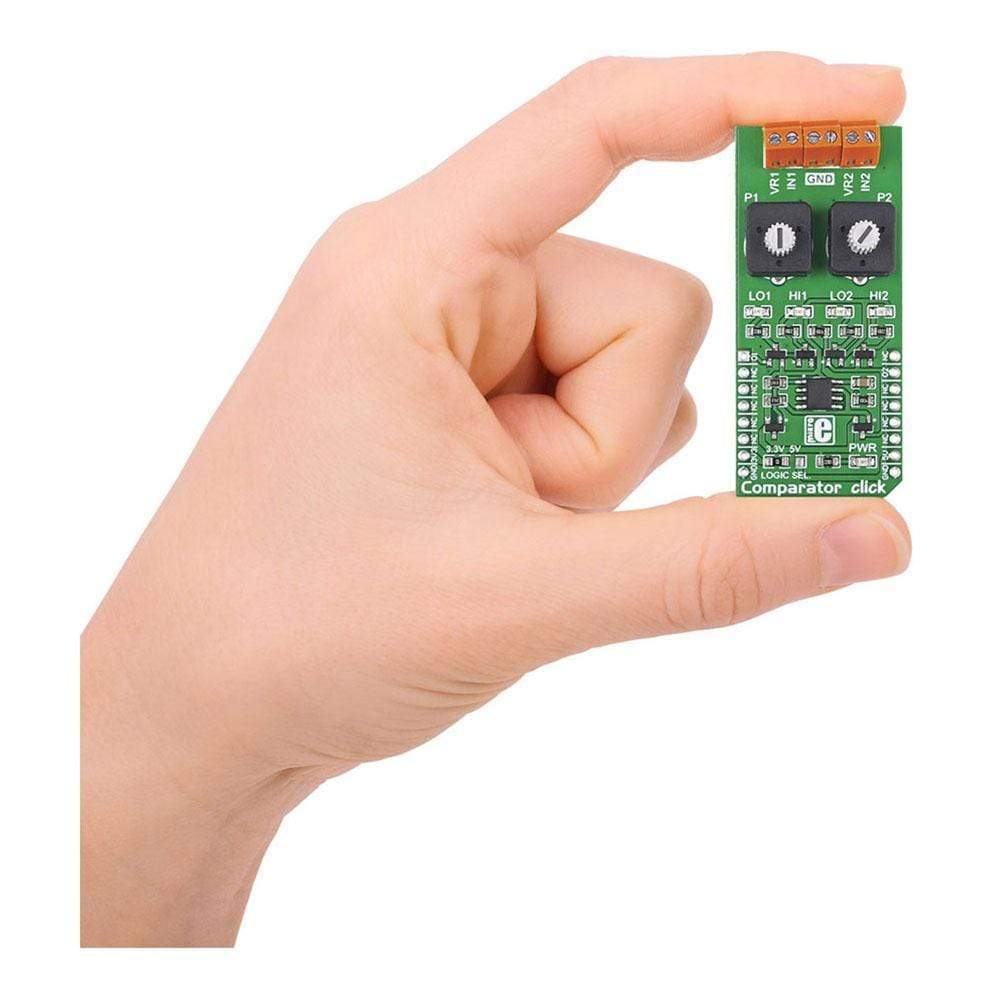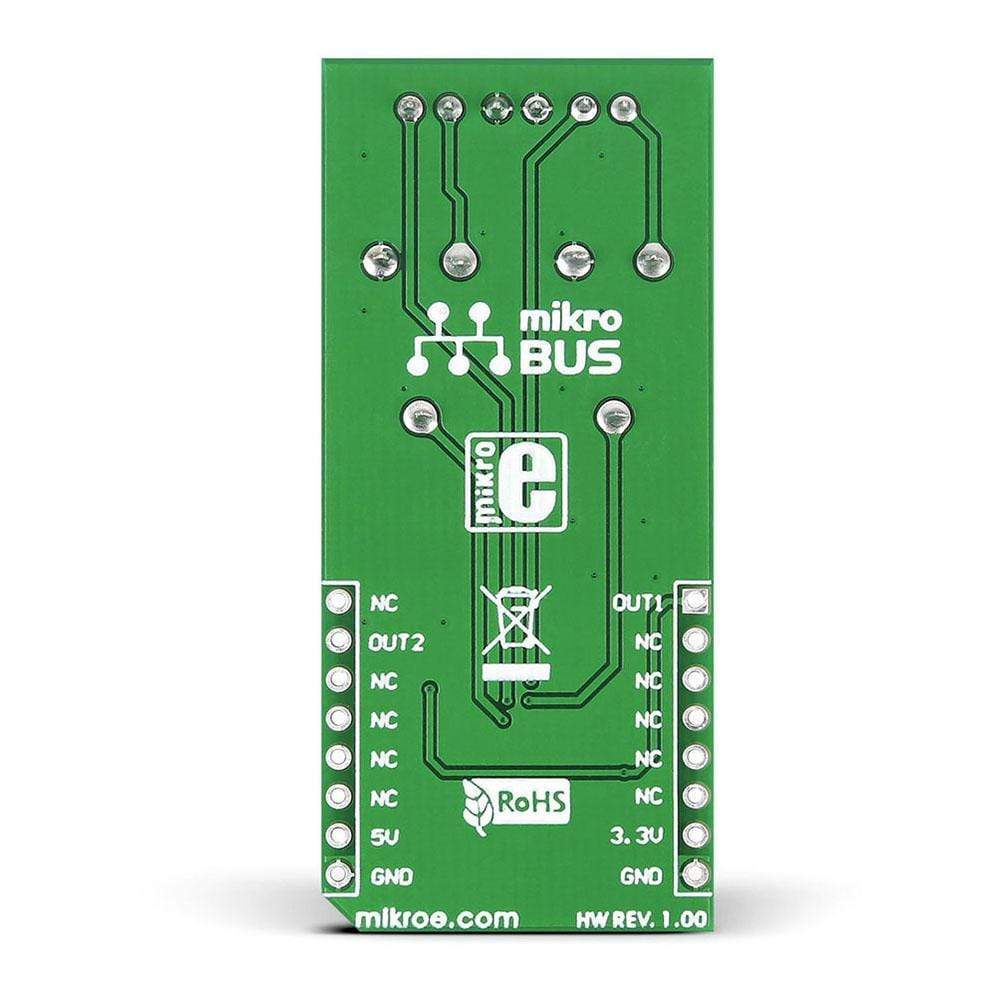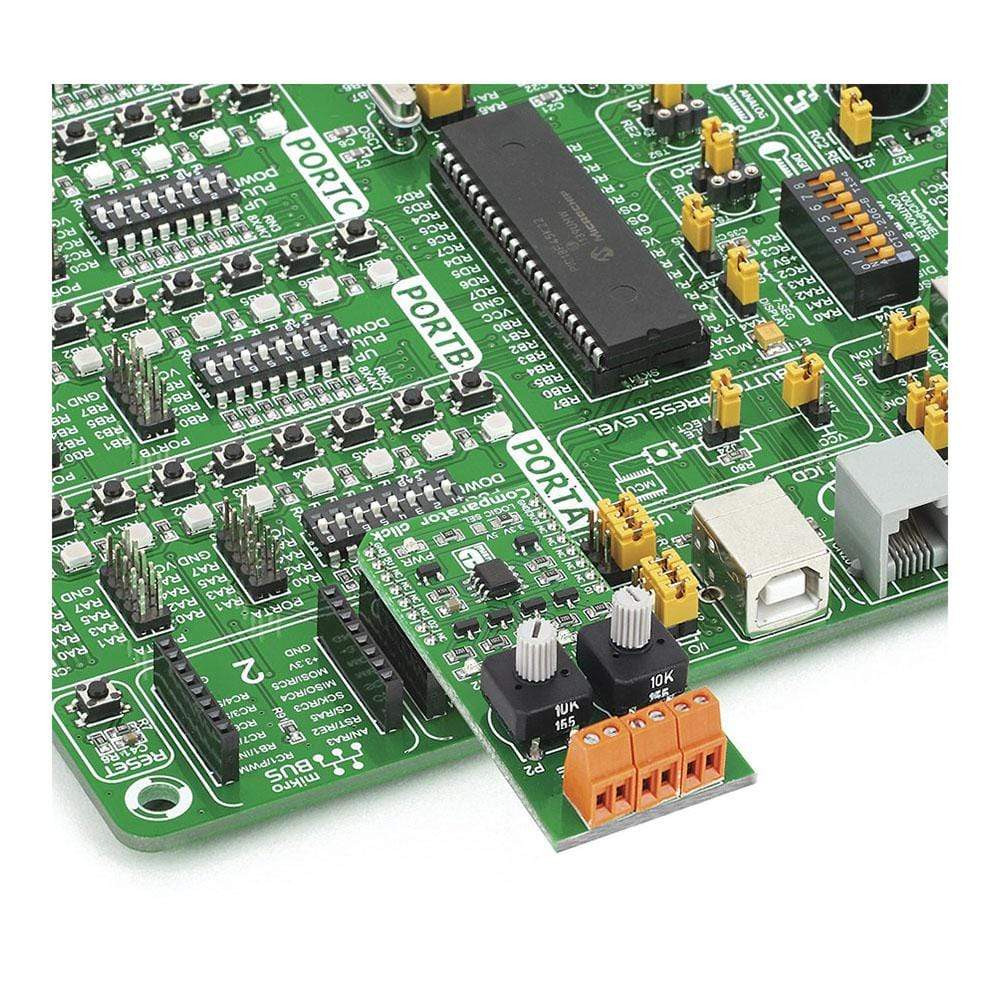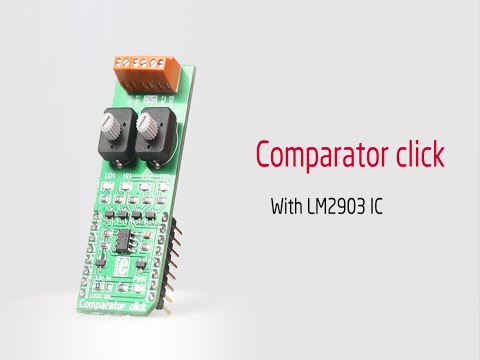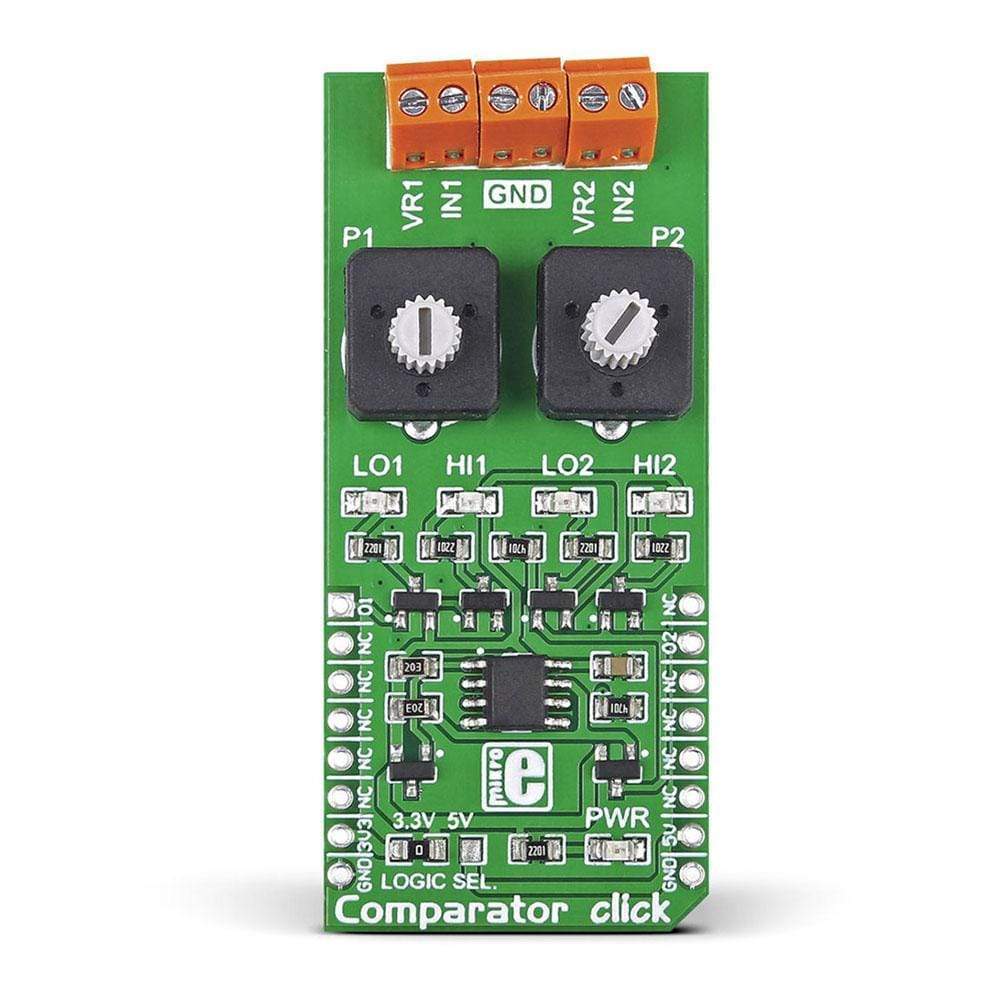
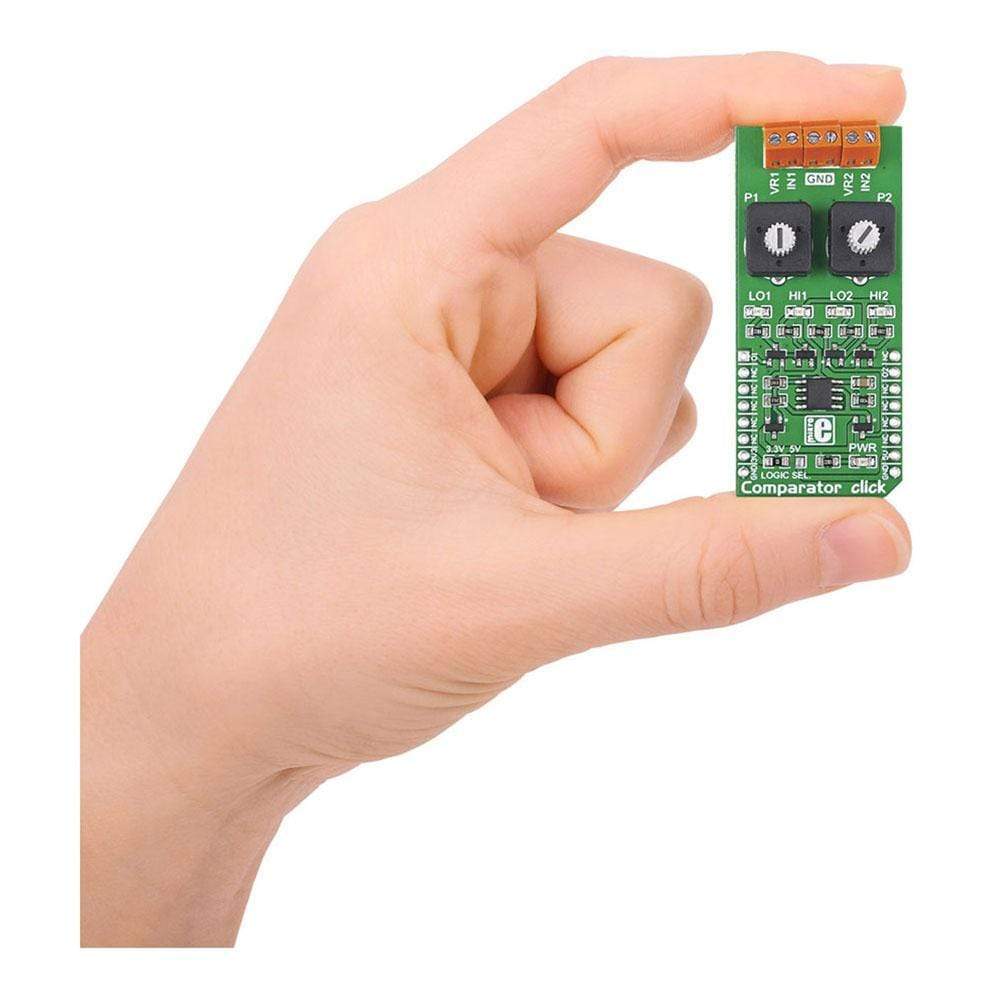
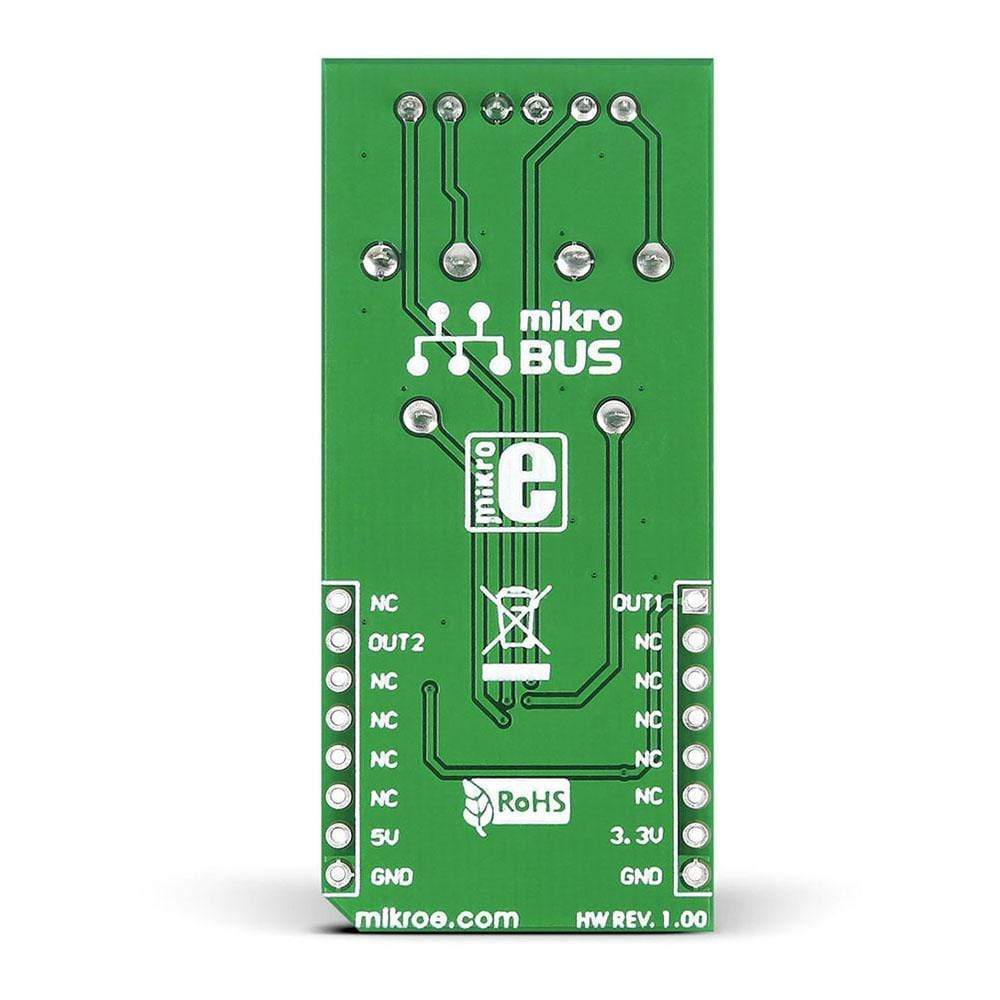
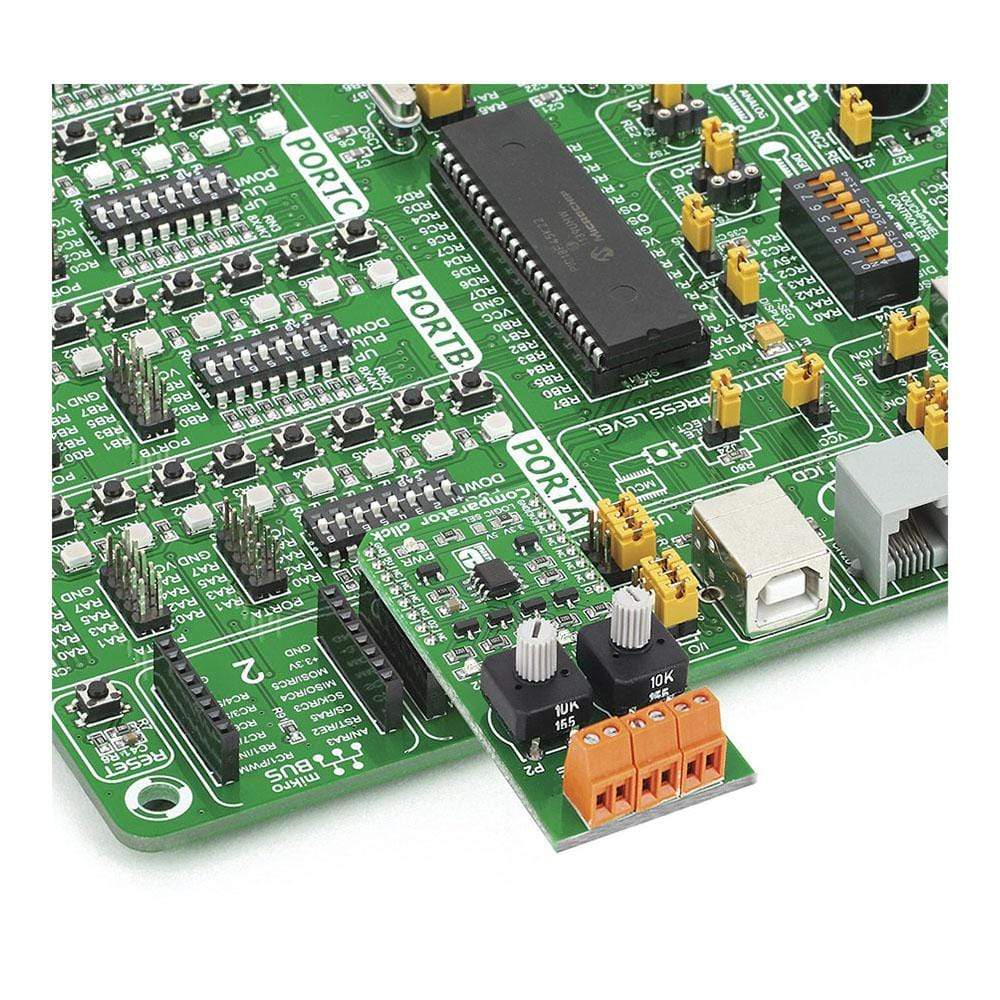
Overview
The Comparator Click Board™ from MikroElektronika is a voltage comparator on a Click Board™ add-on board carrying an LM2903 precision voltage comparators. This LM2903 IC features two independent voltage comparators, two pairs of screw terminals (additional two screw terminals are for GND connections), and two potentiometers.
It can be used with either a single or dual power supply over a wide range of voltages. The screw terminals allow the user to connect separate inputs, while the two potentiometers, placed between the screw terminals and the IC, configure the setpoint voltage. Each input has its own interrupt pin on the socket, i.e., one through the MikroBUS INT pin, the other in place of the default MikroBUS AN pin.
The Comparator Click Board™ is designed to use either a 3.3V or a 5V power supply.
Downloads
IC/module: LM2903 IC
The LM2903 IC consists of two independent precision voltage comparators on the Click Board™ that operate over an extensive range of voltages. The comparators can operate from a single power supply as well as dual supplies.
How Does The Comparator Click Board Work?
When paired with analog sensors, the Comparator Click Board™ allows user to hook up an analog signal. The voltage from this analog signal is used as an input and compared with the physical value set as a reference by using the potentiometer. The device will then digitally check if your input voltage is higher or lower than the referenced value. If the input value exceeds, an interrupt signal is triggered.
Power: Single-Supply or Dual Supplies
The Comparator Click Board™ is designed to be used with single or dual power supply. For single power supply,
| General Information | |
|---|---|
Part Number (SKU) |
MIKROE-1915
|
Manufacturer |
|
| Physical and Mechanical | |
Weight |
0.03 kg
|
| Other | |
Country of Origin |
|
HS Code Customs Tariff code
|
|
EAN |
8606015076614
|
Warranty |
|
Frequently Asked Questions
Have a Question?
Be the first to ask a question about this.

